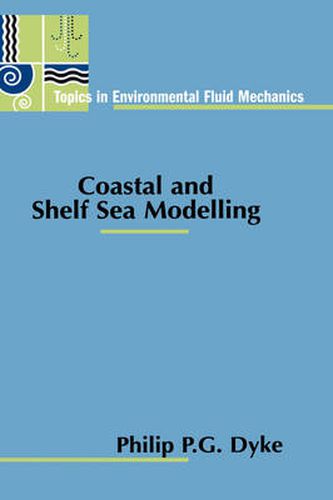Readings Newsletter
Become a Readings Member to make your shopping experience even easier.
Sign in or sign up for free!
You’re not far away from qualifying for FREE standard shipping within Australia
You’ve qualified for FREE standard shipping within Australia
The cart is loading…






This title is printed to order. This book may have been self-published. If so, we cannot guarantee the quality of the content. In the main most books will have gone through the editing process however some may not. We therefore suggest that you be aware of this before ordering this book. If in doubt check either the author or publisher’s details as we are unable to accept any returns unless they are faulty. Please contact us if you have any questions.
Since the computing revolution, modelling has become the most important way in which we further our knowledge about how the sea moves and how the processes in the sea operate. The coast and the continental shelf are two of the most important areas of the sea to understand. In this text, modelling the processes that occur in the sea is monitored continually through real life examples. Sometimes these are incorporated naturally within the text, but there are also a number of case studies taken from the recent research literature. These will be particularly valuable to students as they are presented in a style more readily accessible than that found in a typical research journal. The motivation for modelling is care for the environment. The well publicised problem of global warming, the phenomenon of El Nino, more localized pollution scares caused by tanker accidents and even smaller scale coastal erosion caused by storms all provide motivation for modelling and all get coverage in this text. Particularly novel features of the book include a systematic treatment of the modelling process in a marine context, the inclusion of diffusion in some detail, ecosystems modelling and a brief foray into wave prediction. The final chapter provides the reader with the opportunity to do some modelling; there are many worked examples followed by exercises that readers can try themselves. All answers are provided. Throughout, the style is informal and the technicalities in term of mathematics are kept to a minimum. Coastal and Shelf Sea Modelling is particularly suitable for graduate marine and oceanographic modelling courses, but will also prove useful to coastal engineers and students at any level interested in the quantitative modelling of marine processes. It is stressed that only a minimal level of mathematics (first year calculus or less) is required; the style and content is introductory.
$9.00 standard shipping within Australia
FREE standard shipping within Australia for orders over $100.00
Express & International shipping calculated at checkout
This title is printed to order. This book may have been self-published. If so, we cannot guarantee the quality of the content. In the main most books will have gone through the editing process however some may not. We therefore suggest that you be aware of this before ordering this book. If in doubt check either the author or publisher’s details as we are unable to accept any returns unless they are faulty. Please contact us if you have any questions.
Since the computing revolution, modelling has become the most important way in which we further our knowledge about how the sea moves and how the processes in the sea operate. The coast and the continental shelf are two of the most important areas of the sea to understand. In this text, modelling the processes that occur in the sea is monitored continually through real life examples. Sometimes these are incorporated naturally within the text, but there are also a number of case studies taken from the recent research literature. These will be particularly valuable to students as they are presented in a style more readily accessible than that found in a typical research journal. The motivation for modelling is care for the environment. The well publicised problem of global warming, the phenomenon of El Nino, more localized pollution scares caused by tanker accidents and even smaller scale coastal erosion caused by storms all provide motivation for modelling and all get coverage in this text. Particularly novel features of the book include a systematic treatment of the modelling process in a marine context, the inclusion of diffusion in some detail, ecosystems modelling and a brief foray into wave prediction. The final chapter provides the reader with the opportunity to do some modelling; there are many worked examples followed by exercises that readers can try themselves. All answers are provided. Throughout, the style is informal and the technicalities in term of mathematics are kept to a minimum. Coastal and Shelf Sea Modelling is particularly suitable for graduate marine and oceanographic modelling courses, but will also prove useful to coastal engineers and students at any level interested in the quantitative modelling of marine processes. It is stressed that only a minimal level of mathematics (first year calculus or less) is required; the style and content is introductory.